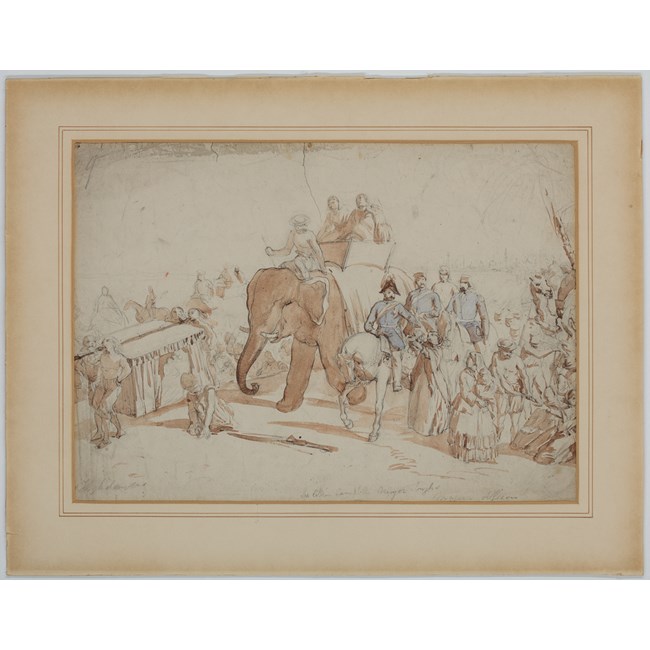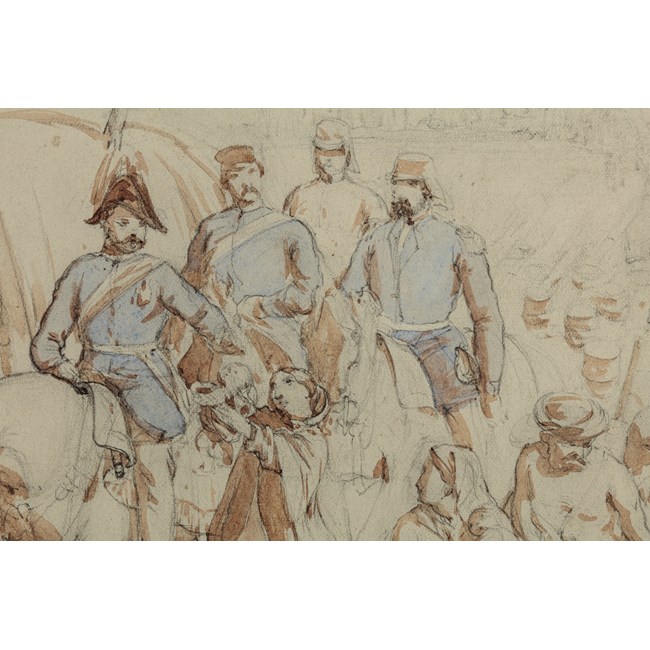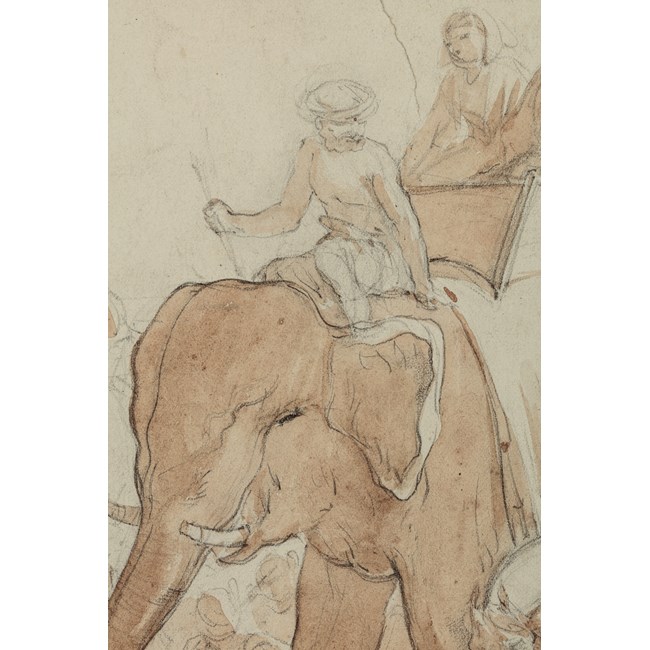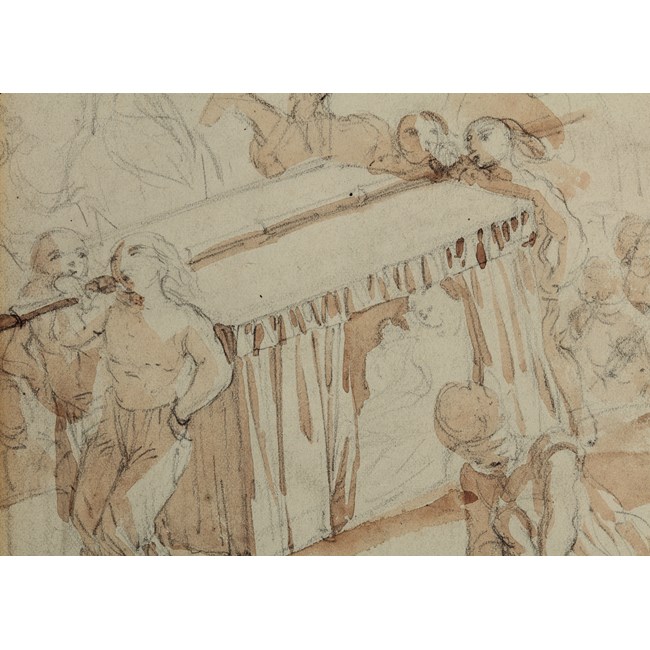
The Relief of Lucknow
The Relief of Lucknow
Circa 1857
Watercolour and pencil on paper
29cm high, 45cm wide
The Relief of Lucknow
This triumphant procession marks the end of the siege of Lucknow, a major campaign during India's First War of Independence. Leading the cavalry, Sir Colin Campbell is accompanied on horseback by his secretary Major Sir Archibald Alison and Major Inglis. Amongst the jubilant crowd of well-wishers a mother offers her young baby for Campbell’s blessings while two ladies ride upon an elephant, their expressions display a sense of forlorn exhaustion that only war can evoke. Below this a young woman and her infant take refuge in a palanquin, escorted by the 78th Highland regiment. Field Marshal Colin Campbell, 1st Baron Clyde, (1792 –1863) was a British Army officer who rose to prominence after the first Opium War (1839-1842) and the second Anglo-Sikh War (1848-1849). Following the outbreak of the Indian Rebellion in 1857, the Prime Minister Lord Palmerston appointed him Commander-in-Chief in India. In November Campbell left England with one days notice and led one of the most decisive campaigns of the relief of Lucknow. An earlier siege had failed to liberate the men, women and children held captive at the British residency. The beleaguered citizens faced disease and starvation at the hands of the rebels. Campbell devised an ingenious strategy for liberating the prisoners. Instructing his artillery to bombard the Kaisarbagh and convincing the rebels a major attack was imminent, he erected large screens to shield the fleeing captives. While Major Inglis and General Outram distracted the rebel fighters, the 78th Highlanders formed the rear guard to cover the withdrawal, an act that gained the regiment the prestigious Victoria Cross. The present sketch celebrates the efforts of Campbell and his aids as they escorted the women and children to safety at Cawnpore. Employing a fluid use of line and subtle highlights, the artist demonstrates a refined competence throughout the work. Discerning use of colour such as the pale blue General’s uniforms, serve to demarcate the central protagonists, leaving no doubt as to their importance. Returning to England these valiant men received a hero’s welcome and the sobriquet ‘the Saviours of Lucknow’ and the ‘Heroes of India.’ Stories of their relief campaign filled the Victorian collective consciousness and became the subject of books, paintings and even a poem by Alfred, Lord Tennyson.
Literature:
Ball, C. History of the Indian Mutiny, London Printing and Publishing Company, 1858
Greenwood, A. Victoria's Scottish Lion: The Life of Colin Campbell, Lord Clyde, The History Press; 1st edition, 2015.
Inglis, Lady S. The Siege Of Lucknow: A Diary, London: James R. Osgood, McIlvaine & Co; New York: Charles Scribner's Sons, 1892
Newark, T. Highlander: The History of The Legendary Highland Soldier, Skyhorse Publishing, New York, 2009
Ruutz, R. L.E. A Personal Narrative of the Siege of Lucknow, From its Commencement to its Relief by Sir Colin Campbell, London Printing and Publishing Company, 1858
@AMIRMOHTASHEMI








 instagram
instagram
